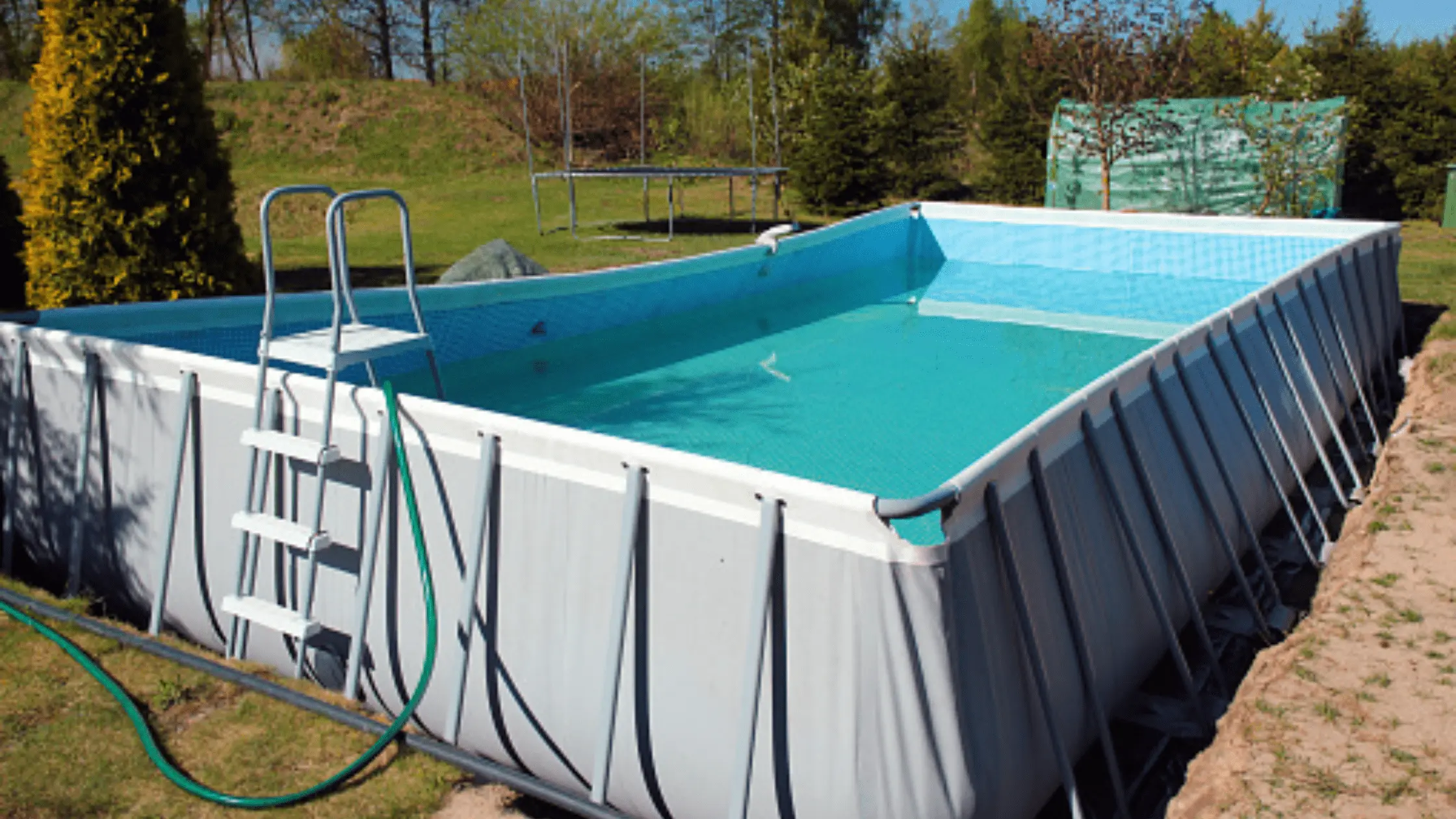Introduction:
Above-ground swimming pools are a less expensive option than in-ground pools. If you wish for it to last a longer period, it must be positioned properly. As a result, surface leveling is required for the swimming pool to rest on the ground appropriately. So, you must know, how to level ground for a pool. In this article, I have discussed a few steps to level ground an outdoor pool quickly and easily.
Installing an above-ground swimming pool usually takes time and energy because you must level out the surface of the outdoors in which the swimming pool will be placed.
To begin, you must understand how to level the ground for one swimming pool. Keep in mind, correct swimming pool ground leveling is required to make sure of secure and dependable swimming practice.
Here I have discussed a 5-step appropriate system for leveling the surface of a pool, enabling you to set up your above-ground pool with confidence. The resources and equipment needed for this process are also discussed in this article.
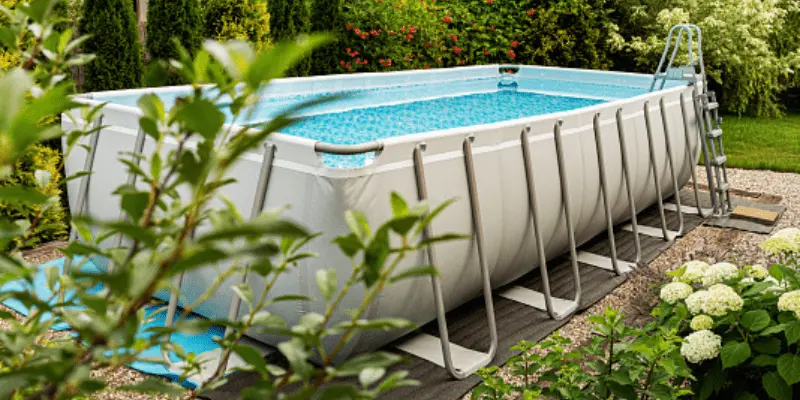
Why level ground for a pool?
Your children have always been wanting with you for a pool each early summer, and now you’ve finally purchased an above-ground pool.
However, before you begin placing the wall and surface and pouring this with water, you’ll require to do some groundwork on the land you’ve chosen for the pool.
You must know why leveling the surface of the pool is an essential step. Here I mentioned some reasons…
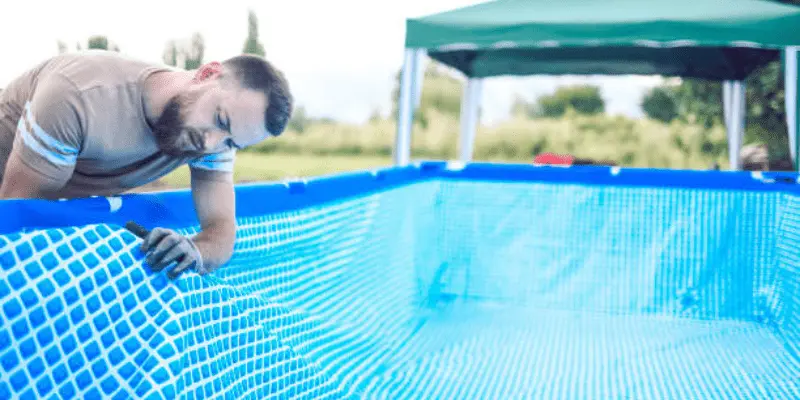
The level of water will be irregular:
Placing a pool on rough surfaces is dangerous. You may be finishing up with a depth and a shallow end of the pool, which may be unsafe for small kids who can’t reach the ground of the tool.
The imbalanced level of water might also cause issues for the filtration system as well as other washing and cleaning.
The formation will be weakened:
The additional pressure placed on specific parts of the pool wall is another major risk associated with an imbalanced pool. Since the load is not spread equally on each side, the structures can bend, turn, or even tear.
In the most unlikely circumstance, the broken segment of the sides will simply collapse, destroying your pool. It can cause an overflow of water in the lawn, bringing anyone inside the pool and nearby places at risk of getting hurt.
The pool will simply look bad:
The irregular pools are always visible. It is immediately apparent that one side is smaller than the other.
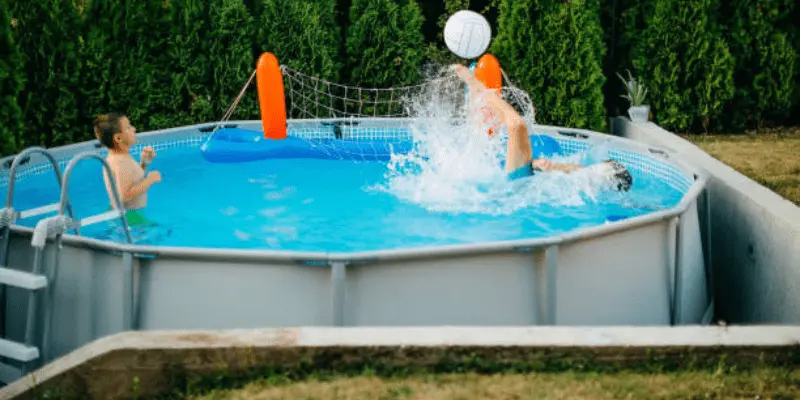
What equipments are required to level ground for a pool?
It’s not difficult to level a specific area of the ground in order to place a pool, but with the right tools the work can be made easier. Required equipment to level ground for a pool is listed below:
Sod cutter:
Removing the grass is among the most stressful stages, and if you have powerful Sod cutter, you can speed up the process.
Long leveling equipment with a board:
When you place the board on the designed pool location, it will be clear which areas you need to level.
A pull and a large shovel:
Extracting any stones from the area is essential for ensuring that your pool lining is not damaged, and a broad shovel will assist you in digging out all the mud.
A broad shaft and a grass roller:
To soften and level the debris on the location, use a rake as broad as required, followed by a grass roller to press the soil flat on the ground.
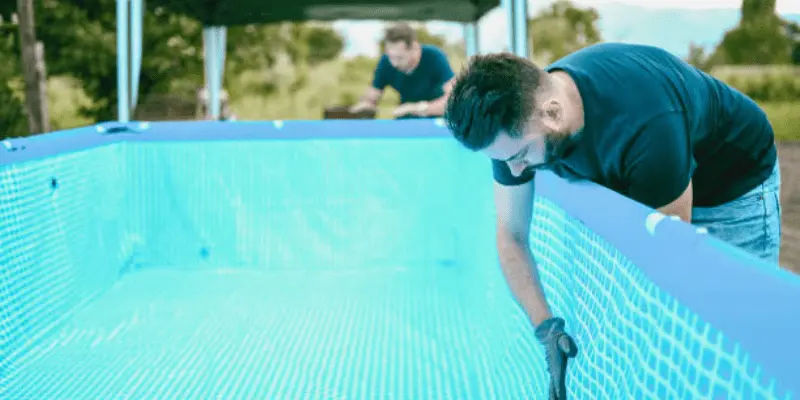
How to level ground for a pool step by step?
Locate the best site:
Whenever a pool is installed, it is difficult to relocate it without emptying and totally removing it, so it is important to pick the correct place before you begin. So, locating the best site is the first step to leveling ground for a pool.
Locating the largest surface location of the garden will make the next steps much easier. Tree branches above the pool may fall leaves, making maintenance and cleaning more difficult.
Avoid all wastewater or septic pipelines, cables, and electric wires. Choose a location that lies inside your borders, Keep 2 ft free space in each direction all over the pool.
Clean and clear the area:
It is essential to empty the space before installing the pool. Debris in the area can destroy the liner, causing permanent damage to the pool.
The grass must first be removed with a sod cutter, or a rototiller can be employed. Remove all rocks, tree roots, or other potentially harmful objects from the liner.
Use Leveling Device:
Do not just visually inspect the pool’s location to ensure its level. If you are incorrect, it can cause major problems when filled with water.
It is necessary to use a proper leveling device to level the ground for a pool. The simplest approach is to take a long, flat piece of board and place it in the pool’s designated location, then use a level to check the flatness. This will assist you in identifying high and low points on the spot.
If you don’t have a long piece of board, you can use a string, expanding it from the middle and retaining it tight. After that use your level, and go all the way along the string to make sure that the area is perfectly flat.
Repair any edges or gaps:
You must smooth out any leveling problems. Dig into the surface to level it; it is always preferable to remove bumps rather than add more, as this creates a more good base. It is always good to set your pool at least two inches down from the ground.
Smooth the ground with sand:
After leveling the ground, a good amount of sand is required. The sand acts as a base to protect the pool liner while also acting as a separator against grass, and any sharp objects. Create a 2-inch thick sand layer across the entire area of your pool’s decided location.
Firmly press the sand down:
Since allowing the sand to end up settling, it must be compressed to form a stable foundation for the pool. A lawn roller is an ideal choice for the job. Make the whole pool base plain.
Make sure the ground must be completely flat. If not, make use of a shovel to level this. Again use the lawn roller until you are 100% satisfied.
Place a base shield on the ground:
You can buy specialized pool sheets, which are generally foam that need to place beneath the pool as an additional layer of safety. This bottom layer helps to protect and avoid the loss of heat from the water to the cold floor, as well as to minimize the chance of tearing in the base of the pool.
Finding the hole to fix up when your pool is filled with water can be a major headache. Putting sufficient safeguards in place in such early stages is a much cleverer step. When the base shield is in position, you can proceed with the next step.
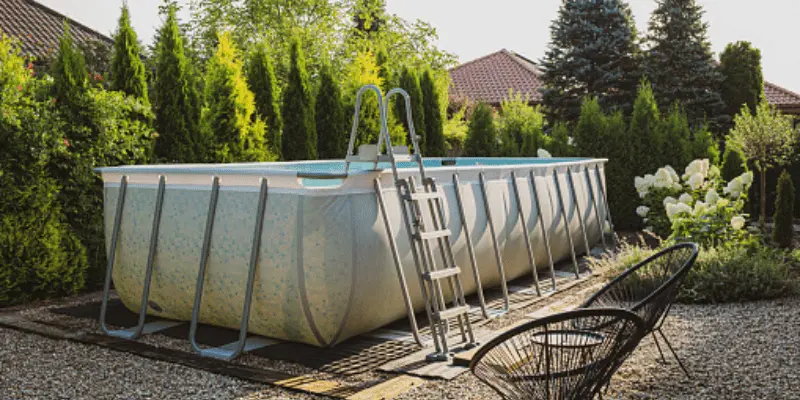
Begin Building The Pool:
The guidelines will differ slightly based on the particular model, however, they all have the same concept. Follow the guidelines thoroughly, and the pool will be ready.
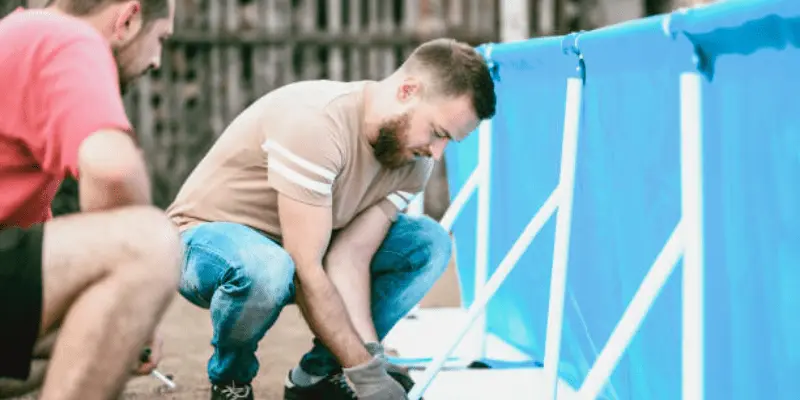
Level ground for a pool; Conclusion:
Do not ignore the significance of properly forming and leveling the surface of the pool. If you make a mistake at any of the stages above, your pool will be at risk of tearing at any time. Follow all the steps to level ground for a pool, and the pool will last year after year.
